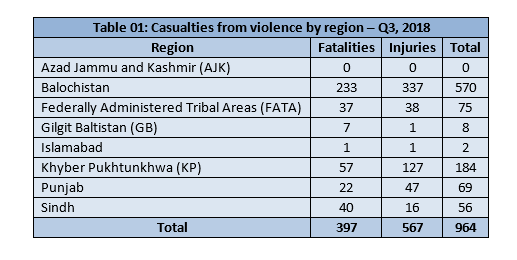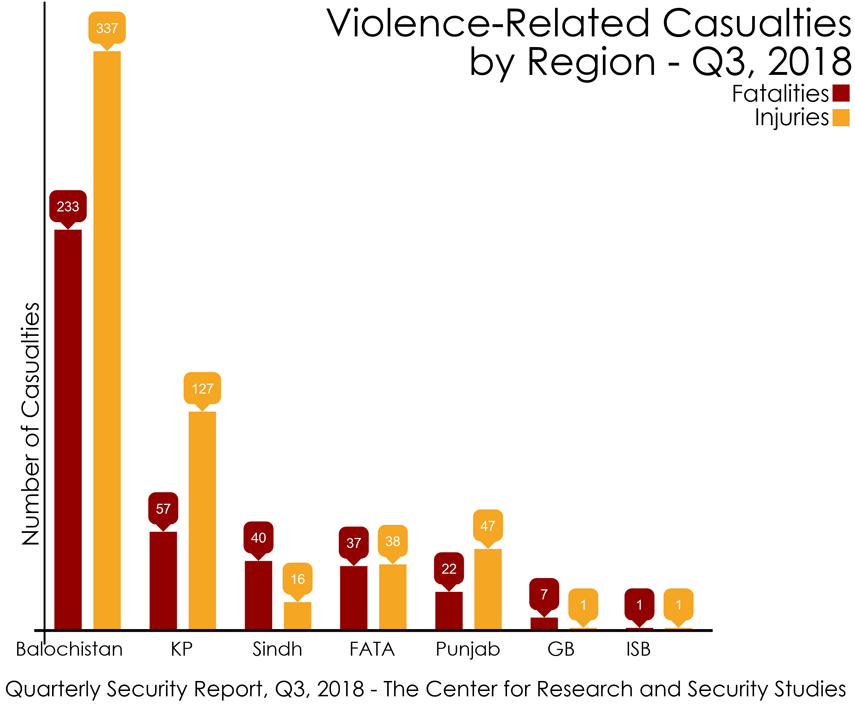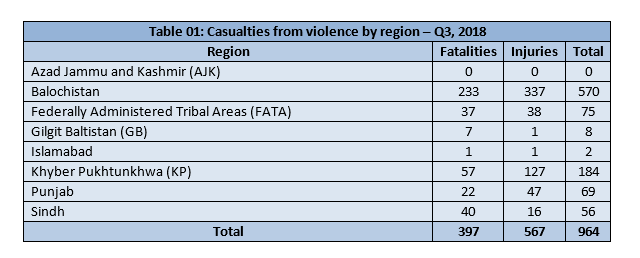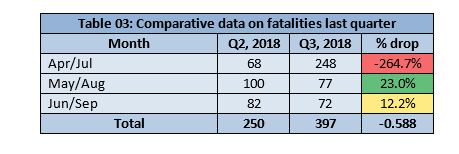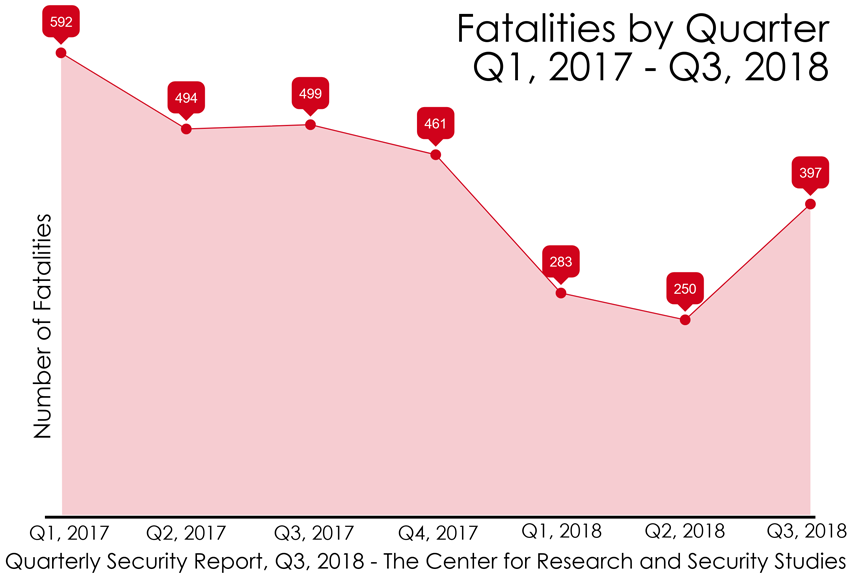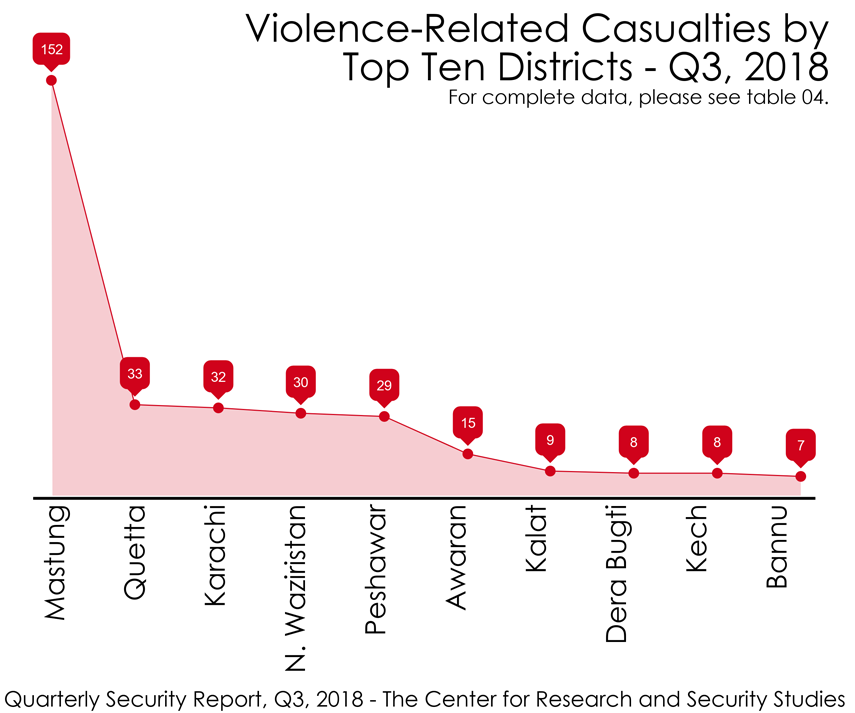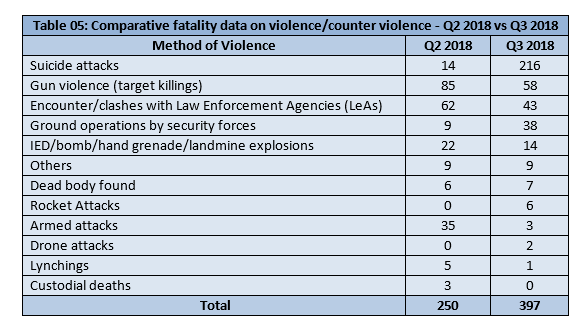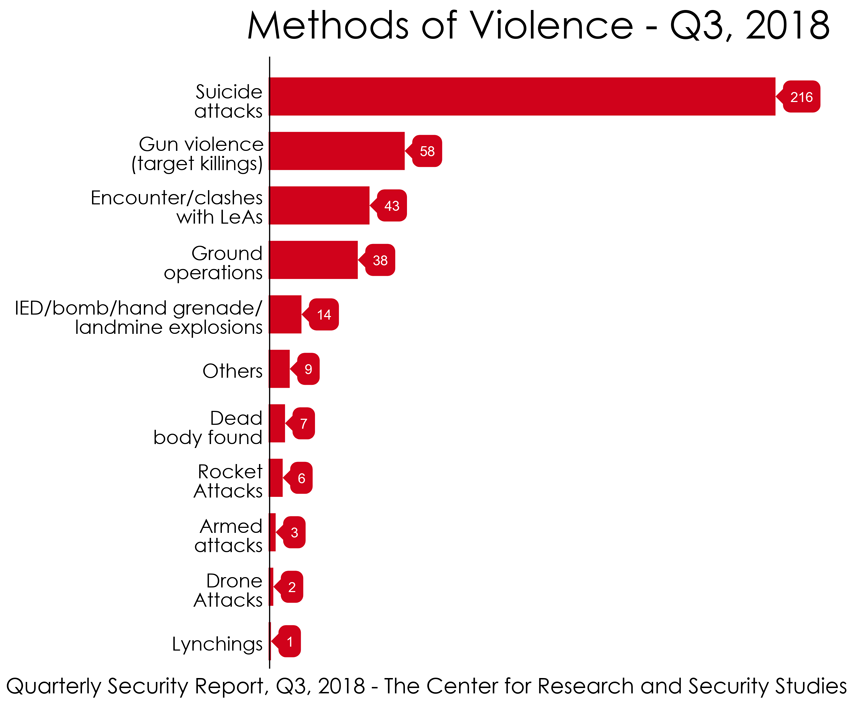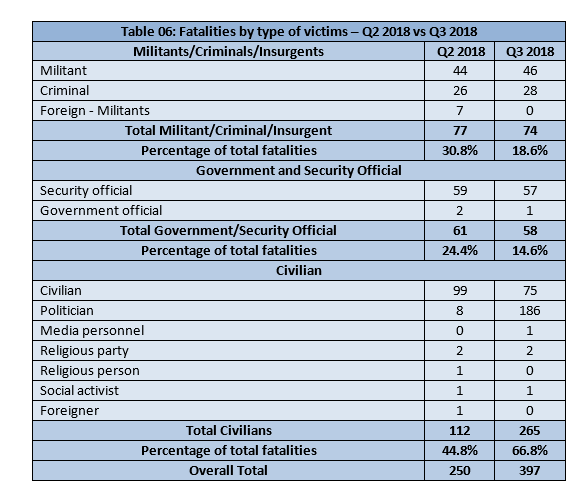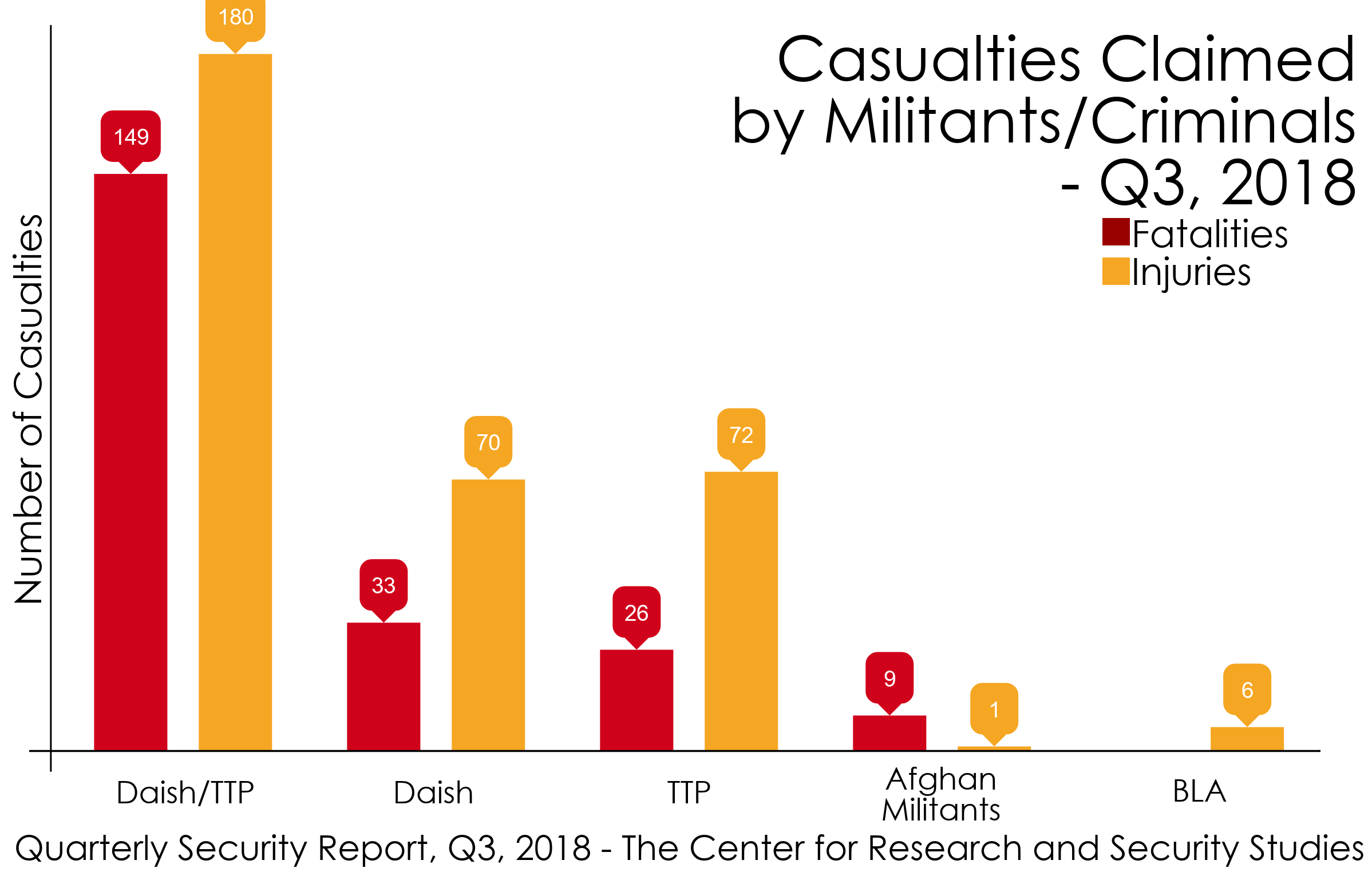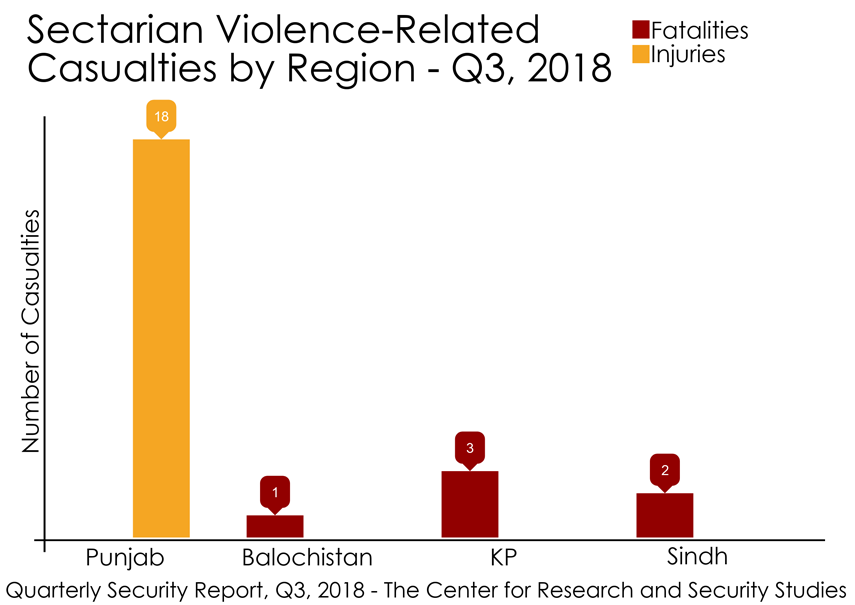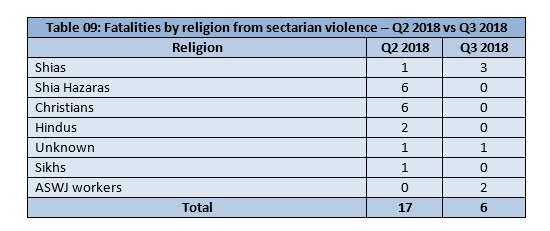Executive Summary
The third quarter of 2018 was very volatile for Pakistan, owing to a wide array of factors. After a long trend of steadily declining militancy and attacks, and despite an unprecedented deployment of security forces during election campaign, the militants targeted several political parties and candidates that they were in disagreement with.
Surprisingly, the upsurge in militancy in Pakistan also remained confined to Balochistan and Khyber Pukhtunkhwa (KP) regions reflecting its links to the Afghan based militants. The regional challenges pose a serious threat to the security situation in Pakistan. This will remain a serious concern for the security agencies and the analysts.
Readers can approach CRSS for information related to this report. Alternately, you may send your queries to mail@crss.pk, directly to Mohammad Nafees, Senior Research Fellow, CRSS – the author of the report (mohammad.nafees@yahoo.com), or Zeeshan Salahuddin, Senior Research Fellow, the editor.
Acronyms
Casualties from Violence in Pakistan
The casualties of violence in Q3, 2018 took a turn for the worse at 964 (397 dead, 567 wounded) up from 521 in the previous quarter. More than 50% of these casualties were recorded in Balochistan alone, followed by KP, Sindh, FATA, and Punjab (table 01).
While GB, Balochistan and KP regions witnessed a significant rise in violence, all other regions of the country recorded a considerable decline in violence, especially Punjab and Islamabad Capital Territory (ICT) (table 02).
Monthly data shows July (election month) as the most violent month. In the next two months the security situation reversed and the violence receded considerably (table 03).
The epicenter of violence shifted this quarter from the capital cities of the country to other places. Lahore, the capital of Punjab, had zero report of violence while Karachi and Quetta showed significant decline. Peshawar was the only provincial capital where occurrences of violence witnessed a significant rise. The highest loss of human lives to terrorism was recorded in Mastung district of Balochistan, followed by four other districts of the same province, Awaran, Kalat, Kech and Dera Bugti, that showed upward trend in violence (table 04).
A sharp rise in suicide attacks during the months of July and August contributed to the ballooning casualties this quarter. A large number of these victims were leaders or activists of political parties. Within two weeks, from July 11-25, 2018, seven suicide attacks targeted different locations in Balochistan, KP, and Punjab leaving 210 persons dead and 328 wounded. One of these attacks targeted a corner meeting of the Awami National Party (ANP) in Peshawar’s Yakatoot area on 11 July 2018 and killed 22 persons including the leader of ANP, Barrister Haroon Bilour. On 14 July 2018 another suicide attack targeted election campaign gathering of Balochistan Awami Party (BAP) in Mastung and killed 149 persons including the leader of the party, Sardar Siraj Raisan. In retaliation of these attacks, security agencies enhanced their ground operations against the suspected militants and eliminated 38.
Among all victims of violence, the civilian fatalities were the highest which went up to 67% of the total fatalities during this quarter up from 45% in Q2, 2018. Fatalities of security personnel were at 15% against the 24% recorded in the last quarter. The fatalities of the militants and criminals also went down to 19% this quarter from 31% in Q2, 2018 (table 06).
Two militant outfits, Daish (Islamic State) and Tehrik-e-Taliban Pakistan (TTP), reasserted their presence by claiming the responsibilities for most of the fatalistic attacks recorded during this quarter (table 07). Despite being known as two separate entities, the target of their attacks were identical, showcasing the nexus of militancy in the country.
Afghan based militants were also very active during this quarter and carried out multiple attacks on the security check posts along the Pakistan/Afghanistan border areas killing nine security personnel. Although the country has made remarkable progress in eliminating terrorism, the sudden rise of these internal and external militant organizations is a reminder of a threat that still festers.
Sectarian Violence
A sharp decline in sectarian violence was observed during this quarter, 6 compared to 17 last quarter. KP, Sindh, and Balochistan recorded fatalities. In Punjab a quarrel over a petty issue between Ahmadis and citizens left 18 persons injured. An Ahmadi place of worship was ransacked and some of its items were set on fire following an exchange of gunfire in Ghaseetpura, Faisalabad (table 08).
The victims of sectarian violence were from Shia and Sunni communities. As no militant organization claimed their responsibility for the attacks, the incidents appear to be locally motivated (table 09).



